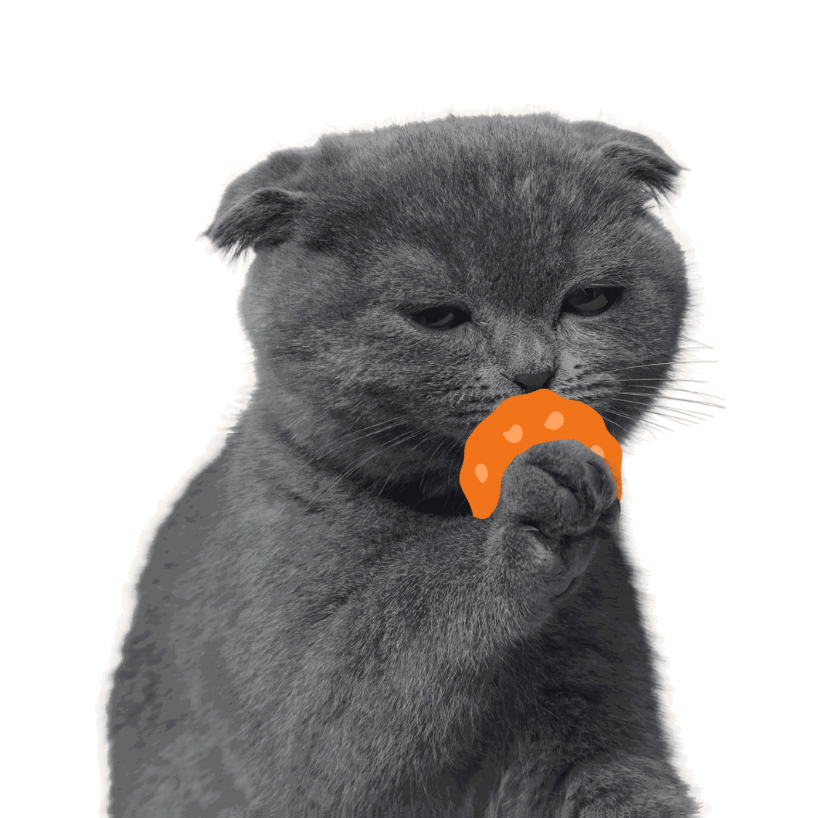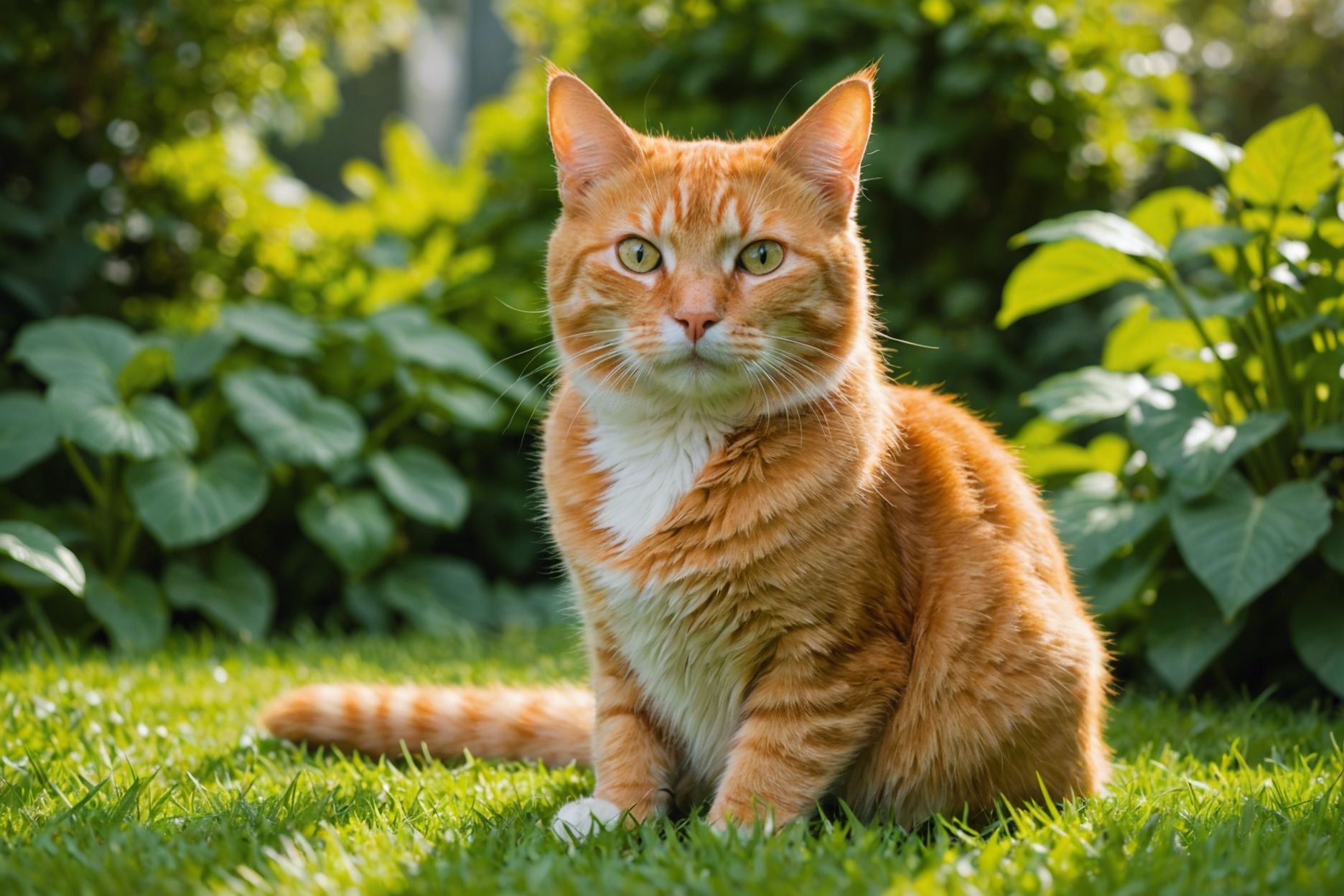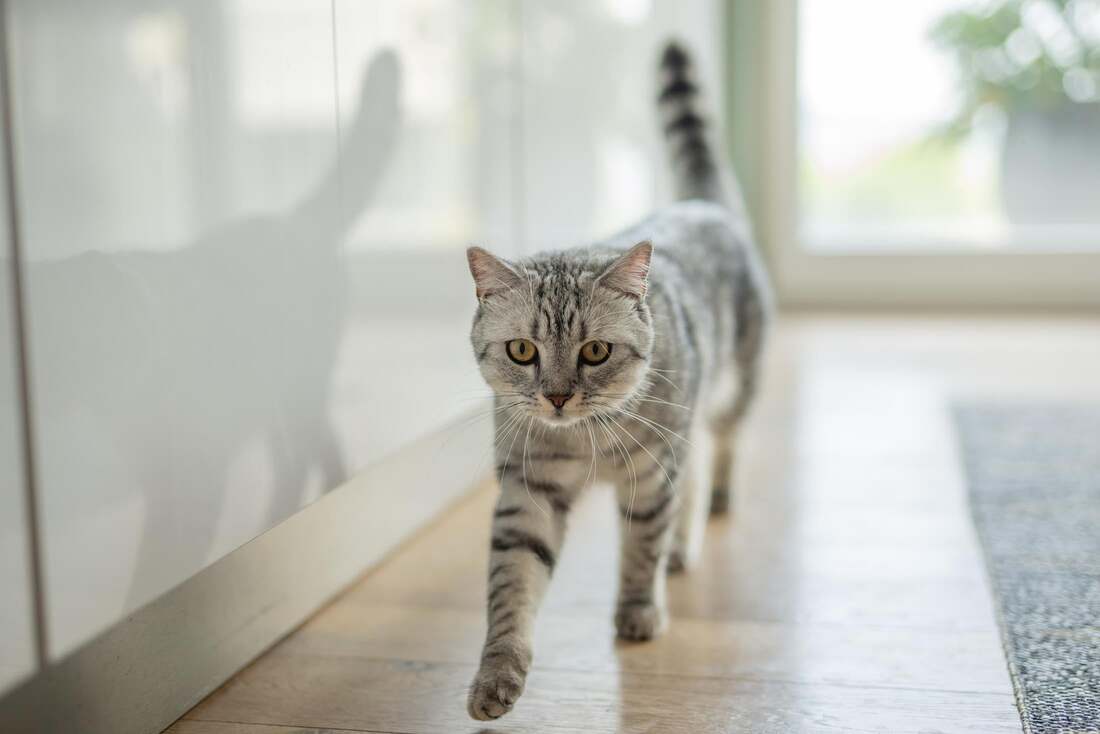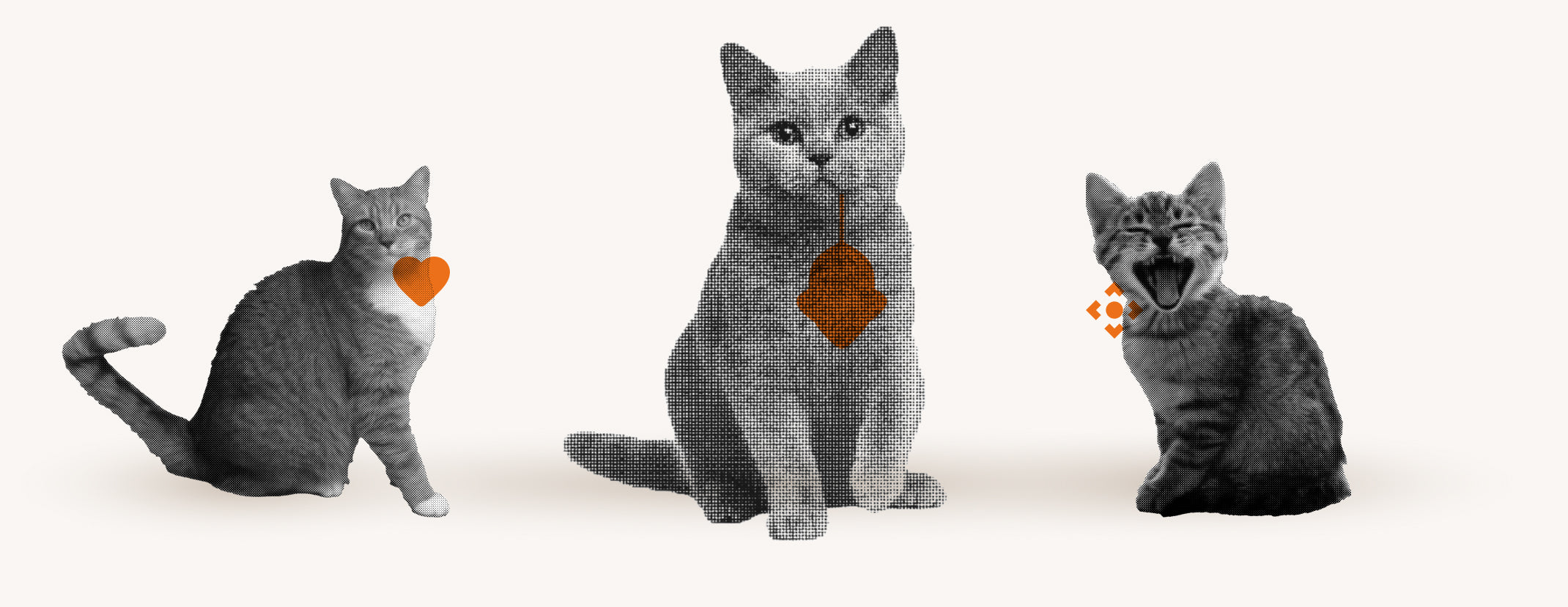Have you ever wondered why some cats have that bright orange color in their fur?
It can be confusing to figure out whether an orange tabby cat is a specific breed or simply a color variation.
Orange cats can be ordinary domestic cats as well as specific breeds such as the Turkish Angora, the Exotic Shorthair or the Persian cat.
In this blog article, we explore the world of orange cat breeds, their genetic characteristics, famous cat lovers, and how you as an owner can benefit from a smart cat flap.
The genetics behind the coat color of the orange cat breed

Although there is no specific breed with exclusively orange fur, this striking color is more common in some cat breeds. These include the American Bobtail, the Exotic Shorthair, and the Devon Rex. Their vibrant coats can range in shade from creamy pastel to intense tangerine, making them particularly popular with cat lovers.
Genetics plays a crucial role in the development of coat color in cats. The pigment responsible for orange fur is pheomelanin, which also gives humans red hair. Interestingly, male cats (tomcats) only need to carry one gene for orange fur, while female cats need two such genes, resulting in a higher prevalence of orange male cats.
Coat patterns and stripes in orange cats
All orange cats share one characteristic: they never have solid-colored fur, but always a striped pattern. These patterns are divided into four main types: tabby, ticked, spotted, and classic swirled. Each of these patterns gives the cat a unique appearance and contributes to the diversity of orange cat forms.
The classic tabby pattern is particularly common, characterized by broad, swirling stripes and often described as "marbling." The stripes are typically darker than the rest of the body, resulting in a striking and distinctive appearance. This pattern is not only aesthetically pleasing but also the result of complex genetic processes that determine coat color and patterning in cats.
Genetic parallels between red-haired humans and orange cats
Have you ever wondered why red-haired people and orange cats both have this distinctive hair or fur color? The key lies in the pigment called pheomelanin, which is responsible for the red color in both humans and cats. This pigment allows the hair of red-haired people and the fur of orange cats to shimmer in various shades of red.
Interestingly, there is a slight difference between humans and cats in the inheritance of this color:
- In humans, the gene for red hair must be inherited from both parents for the hair color to appear.
- In cats, however, it is sufficient for the gene to come from one parent, which results in more male orange cats, since they only have one X chromosome.
Sex distribution in orange cats

The sex ratio is particularly interesting in orange cats. Male cats are more frequently orange than females because they only need to carry one gene for the orange coat color. This gene is located on the X chromosome, and since male cats only have one X chromosome, one gene is sufficient to determine the color.
The situation is different for female cats: they need two copies of the gene on both X chromosomes to be orange. This results in a lower number of female orange cats. The sex ratio is therefore as follows:
- More male orange cats than females
- Female cats need two genes for the orange color.
Social behavior and sociability of orange cats
Orange cats are known for their sociability and friendly nature. They are considered particularly communicative and enjoy interacting with both people and other animals. These cats often seek the company of their owners and are known to vocalize their presence when they feel neglected.
Compared to other cat breeds, orange cats often exhibit a more open and sociable demeanor. Here are some points that characterize their social behavior:
- They are very playful and often remain active well into old age.
- Orange cats make excellent companions for families with children or other pets.
- They adapt well to new environments and are less shy or reserved towards strangers.
Famous lovers of orange cats
Some of the most famous figures in history and the present day have shown a particular fondness for orange cats. Winston Churchill, the former British Prime Minister, is a prime example. He owned an orange cat named Jock and stipulated that a cat with this coat should always live on his estate.
Not only historical figures, but also today's celebrities show their love for these vibrant felines. Many actors, singers, and public figures regularly share pictures and stories of their orange cats on social media, further increasing the popularity of this coat color.
Orange cats in Hollywood
Orange cats have a firm place in pop culture. They are not only popular in homes but also on the big screen. A well-known example is the cat Orangey, who appeared in various Hollywood films in the 1950s and 1960s. This talented tabby cat achieved iconic status through his roles in films such as "Breakfast at Tiffany's" and "The Incredible Shrinking Man."
Besides Orangey, there are other famous orange cats in film and television:
- Garfield, the lasagna-loving cat from the comics and films of the same name, is probably one of the best-known examples.
- Jonesy, the cat from the sci-fi horror film "Alien", left a lasting impression in a crucial scene.
These characters demonstrate how versatile and memorable orange cats can be in the entertainment industry.
Nicknames for orange cats
If you're looking for creative and fitting nicknames for your orange cat, there are many fun and unique options. Here are some popular names that can beautifully reflect your cat's vibrant fur color:
- Sunny – for cats that shine like the sun.
- Goldie – perfect for cats with a golden sheen in their fur.
- Caramel – for cats with a softer, caramel-colored tone.
Other distinctive names include:
- Pumpkin – ideal for cats that have the color of a ripe pumpkin.
- Amber – named after the precious, orange-colored resin.
- Chester – a classic name that radiates warmth and friendliness.
Each of these names can charmingly highlight your cat's personality and appearance.
How Flappie can help owners of orange cats
Owners of orange cats know that their lively and curious pets often go on outdoor adventures. The Flappie smart cat flap helps ensure that these adventures don't end with unwanted surprises. Thanks to selective access control and prey detection using camera and AI technology, Flappie can prevent the cat from bringing prey like mice or birds into the house. This not only protects the home from mess and dirt, but also the cat's health.
The Flappie app also offers the ability to monitor and control your orange cat's behavior, no matter where you are. You'll receive push notifications when your cat tries to bring home prey and can control the flap remotely. This gives you peace of mind knowing that your home and your furry friend are well protected, even when you're away. Visit flappiedoors.com to learn more about this innovative solution.
Frequently Asked Questions
What are orange cats called?
Orange cats can be either ordinary domestic cats or specific breeds such as the Turkish Angora, the Exotic Shorthair, or the Persian. Breeds where orange fur is more common include the American Bobtail, the Exotic Shorthair, and the Devon Rex.
Can orange cats be female?
Yes, orange cats can be female. However, it's rarer to find female orange cats because they need two genes for the orange coat color, one on each X chromosome. Male cats, on the other hand, only need one gene on their X chromosome, which is why there are more male orange cats.
What is special about red cats?
Red or orange cats have a striking coat color caused by the pigment pheomelanin, which is also found in red-haired humans. Furthermore, all orange cats have a striped pattern in their fur, never a solid color. These cats are also known for their sociable and friendly nature and are considered very communicative.





Share:
German Longhair Cats: A Comprehensive Guide
Finding out the cat breed – tips and tricks